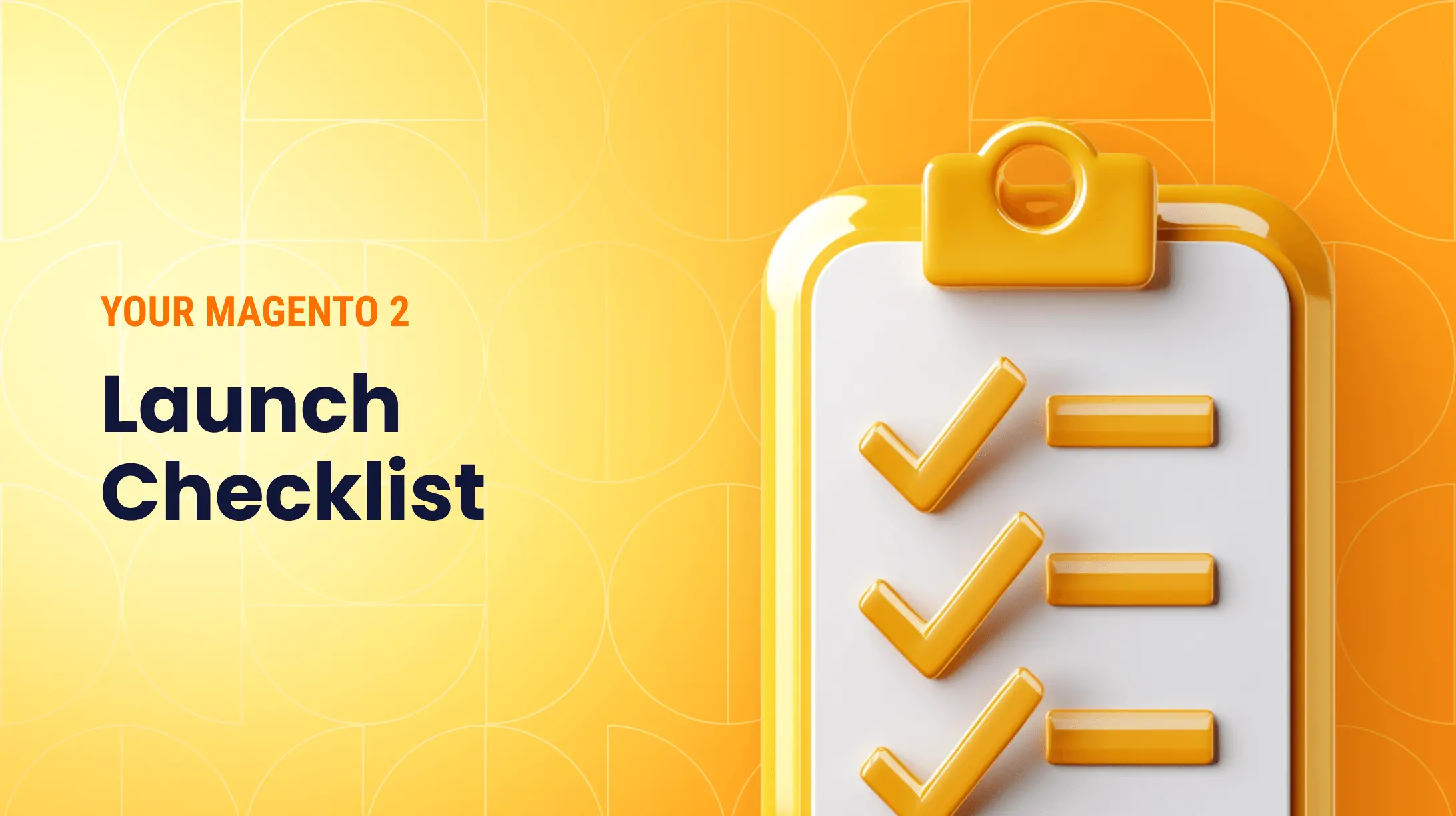0%

Over 43% of all websites on the internet are powered by WordPress, making it the world's most dominant content management system.
For Magento store owners, this creates a disconnect when trying to build a blog WordPress Magento synergy. While Magento excels at commerce, its native blogging tools are often clunky, forcing a choice between a powerful store and an effective content strategy.
The Key Benefits of Using Magento with WordPress
At its core, a Magento-WordPress integration is the technical process of seamlessly connecting your Magento e-commerce store with a WordPress blog. Unlike simply having two separate websites, a true integration uses a specialized Magento WordPress integration extension to make them work together as one cohesive unit. This means your blog shares the same design theme, navigation, and domain as your main store, appearing to customers as a single, unified website.
This isn't just a technical convenience, but a strategic business decision. With this Magento-Wordpress integration you can:

Create a Unified Customer Experience
Your customers never have to leave your Magento store to read your content. The blog inherits your store's header, footer, and overall branding, providing a seamless journey from reading an educational article to purchasing a recommended product. This consistency builds trust and professionalism, reducing bounce rates and keeping users engaged within your ecosystem.
Boost SEO & Traffic
WordPress is built for search engine optimization. Integrating it with your Magento store allows you to leverage powerful SEO plugins like Yoast or RankMath to optimize your blog content. You can target high-value, long-tail keywords that attract customers at the beginning of their buying journey. This content earns backlinks and social shares, boosting your site's overall domain authority, which in turn helps your product pages rank higher in search results.
Drive Contextual Sales
A blog is your most powerful sales tool. With an integrated system, you can naturally guide readers from a problem to your solution. For example, a blog post titled "The Ultimate Guide to Eco-Friendly Kitchenware" can feature embedded links or even live product blocks from your Magento catalog. This transforms passive reading into an active shopping experience, directly increasing sales.
Streamline Operations
This integration allows each platform to do what it does best. Your marketing team can work in the user-friendly WordPress interface they already know to quickly publish and manage content, without needing developer help or navigating Magento's more complex backend. This efficiency saves time, reduces costs, and accelerates your content strategy.
Download and Install WordPress
Go to the WordPress website and download the latest version of WordPress. When you download, you'll get a .zip file. You can upload that .zip file to the server at the root of your Magento store. Rename the file to wp if that's easier for you. (Note: you can also download WordPress to an external server. See the instructions under the “Alternative Heading” below.)
If you are uploading to the Magento server, open a browser and type your site address URL with /wp/ at the end. For example, if your store's URL is https://www.suzysdolls.com, you would type https://www.suzysdolls.com/wp. You should see the WordPress installation page.
Simply follow the steps shown on the screen to install WordPress. The installation will ask for the database information. You can enter your existing Magento database details, which you can find in the $MagentoRoot/app/etc/local.xml file. Or, you can create a new database.
You should now have a WordPress blog on your Magento server. The next step is to integrate the WordPress blog into your Magento store.
Install the Magento WordPress Integration Extension
FishPig is a free Magento WordPress integration module that you'll need to install. First, disable the compile and cache (you can re-enable them after installation).
Configure the Extension
Go to the Magento Admin panel and navigate to WordPress >Settings. You'll need to configure two sections: Integration and Database.
To configure the Integration section, you'll need to go through three primary fields. Integrate Theme is the first field in the section. Choose Yes if you want your blog's theme to be integrated with Magento themes. If you select 'No', the module will just connect to the WordPress database. We recommend choosing 'Yes' since this is the simplest option.
The next field is Home URL. Your entry here should contain the URL of your WordPress collection of articles that will be connected to your Magento store. If you want this collection to be called ‘blog’, enter your home URL followed by /blog. For example, https://www.suzysdolls.com/blog.
However, you can use the WordPress content for other purposes, for instance, sharing company news. In this case, you can use another name for your WordPress-powered article collection, such as ‘announcements’, and should write just that, ‘announcements’, in the Home URL field: https://www.suzysdolls.com/announcements.
The next step is the Path field, which contains the path to your WordPress installation. If you installed WordPress in a Magento subdirectory, you should enter that folder name in the field. In the example above, we installed WordPress in the subdirectory “wp”, so we enter “wp” in the Path field. Click on Save Config.
And that’s it! You don't need to enter anything in the last field.
Configure WordPress for Magento
The final step to integrate WordPress with Magento is to configure WordPress itself. Begin by adjusting the settings of the WordPress Admin Panel. From the sidebar, go to the general settings, Settings > General.
You'll see several fields. Go to the WordPress Address (URL) box and verify that it lists the URL with the WordPress installation. For example, if the Magento URL is www.suzysdolls.com, then the WordPress URL is https://www.suzydolls.com/wp.
Now, go to the Site Address (URL) field. With WordPress Magento integration, this URL will be the base Magento URL plus whatever you entered in the Home URL field when you configured the Magento and WordPress integration module. For example, https://www.suzysdolls.com/blog.
Hit Save Changes. Your WordPress blog and Magento should be integrated. To test this, visit the URL you set up in the Magento module, for example, https://www.suzysdolls.com/blog.
Once the two are integrated, Magento will handle the display of the blog rather than the WordPress theme. Basic themes are part of the module, but you can customize them to match your own branding style.
The Independent Server Method
You can also integrate WordPress and Magento by installing the two on independent servers. This method keeps the two separate and may be more secure.
If you choose this option, you can install WordPress using any domain. Just be sure that the WordPress server will allow database connections from the Magento server.
You can complete this integration by going to Magento Admin > WordPress > Configuration > Mode. Choose external and will need to add the database connection details for WordPress.
Final Words
Magento and WordPress are powerful tools for your online store. Integrating a WordPress blog into your Magento e-commerce is relatively easy, and we hope our WordPress Magento integration example has explained the process to you, step by step.
However, if you have issues with the integration, feel free to reach out to Transform Agency specialists. Our teams are experienced in a wide range of integration services for multiple platforms, including Magento, WordPress, Shopify, and WooCommerce. We can do more than just integrate a WordPress blog into your Magento site and additionally merge the navigation menu and cart data or add Magento blocks to your WordPress themes.
Rely on Transform Agency to take the most out of the two robust website engines and have Magento and WordPress seamlessly work together.
FAQ
Does Magento work with WordPress?
Yes, absolutely. While they are separate platforms, they can be seamlessly integrated using extensions like FishPig. This integration allows them to share a database connection and a unified front-end theme, making them work together as a single, cohesive website from the user's perspective.
Do people still use WordPress for blogging?
Not only is WordPress not outdated, but it also remains the dominant platform for content management worldwide. Its continuous updates, massive plugin ecosystem, and unparalleled ease of use make it the best tool for the job. For pure blogging and content marketing, no native Magento solution comes close to matching WordPress's efficiency and power.
Will integrating WordPress slow down my Magento store?
A properly configured integration should have a negligible impact on performance. The key is to ensure your Magento hosting environment is robust enough to handle the additional resource demands of WordPress. Using caching solutions (like Varnish for Magento and WP Rocket for WordPress) on both platforms is highly recommended to maintain fast load times.
What's the difference between integrating WordPress and using a Magento blog extension?
While Magento blog extensions exist, they often lack the depth, ease of use, and extensive feature set of WordPress. WordPress offers a superior writing and management experience, a vast library of SEO and functionality plugins, and a familiar interface for content creators. An integration gives you the best of both worlds without forcing your marketing team to learn a new, often clunkier, system.
Can I use my WordPress theme with Magento?
With a standard FishPig integration, your WordPress theme is typically disabled in favor of your Magento theme to ensure a consistent look and feel. However, the integration is flexible. It is possible to use a WordPress theme, but this requires more advanced customization to align the design with your store, often defeating the purpose of a seamless brand experience.
Alex excels in creating and approving customization architecture, ensuring robust and efficient solutions for e-commerce platforms. His expertise in Magento allows him to effectively manage tech resources and drive technical projects to successful completion.
Alex excels in creating and approving customization architecture, ensuring robust and efficient solutions for e-commerce platforms. His expertise in Magento allows him to effectively manage tech resources and drive technical projects to successful completion.



